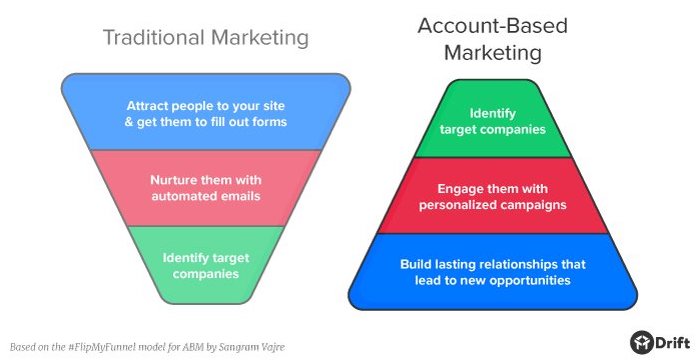Optimizing Your Funnel With Video Content
If you aren’t already taking advantage of the power of video content, you’re missing out on one of the most important channels for any type of marketing – especially B2B. Research shows that video makes for some of the most engaging content. Over 9 in 10 marketers already use video in their funnels to help capture the right audience and serve them relevant, helpful content that allows them to accomplish their business goals. Moreover, nearly the same number of consumers report that watching a brand video has convinced them to buy a product.
At this point, it’s far from groundbreaking to say that video should be a key element of any organization’s marketing funnel. Clients often experience difficulty with the specifics of video content and understanding the optimization process. How exactly should you use video in your funnel? What kinds of videos should you make? And how will you know if your videos are effective?
Clients often experience difficulty with the specifics of video content and understanding the optimization process. Share on XThough it’s tough to definitively answer these questions for any company without specific knowledge of their campaigns, we can offer some advice based on the trends we’ve seen working with clients to help them wisely incorporate video into their existing strategies. Let’s jump in.
Select the Right Kind of Videos
There are dozens of different kinds of video types and endless variations or tweaks you can put on those types to make them even more unique. Just spend a few minutes on YouTube, and you’ll see exactly how diverse video content can be!
In a business marketing context, we can generally group videos into one of three buckets:
- Quick snippets are meant to explain one specific concept or express a single idea. Software companies often create these using a screenshare that shows off a particular feature.
- Medium-length videos are longer and go more in-depth on a broader area. These videos are anywhere from five to 20 minutes in length. For example, one type of feature video could be a medical research company showing off different parts of its facility.
- Feature videos are anything longer than about 20 minutes. These are often pre-recorded speeches or conference sessions shared with the audience.
Again, these categories aren’t perfect, and you can probably come up with endless video types. Don’t get caught up in the specific traits of one type or another – instead, use them as a springboard to think about which type of video may be best for your business. As you go through the process of creating, promoting, and analyzing your video content, be sure to sort them by type so you can get more data on the effectiveness of each kind.
Let Your Prospects See Themselves
Think about some of the best movies, books, or television shows you’ve consumed over the last few years. For many people, the stories in these mediums are much more effective when they feel a connection to the characters in them. That could mean their job, geographic location, family status, etc.
The best marketers have figured out that this concept doesn’t just apply at the box office or the bookstore – it also works in a B2B marketing funnel. Whether you’re planning to create half-hour explainer videos with multiple scenes and people speaking, or you simply want to run a 45-second screenshare showing a single feature, do what you can to ensure your prospects connect with something. You could use language they recognize, name a process they frequently use in their business, or something completely different.
A case study or testimonial-style video is the best video to achieve this connection. Just be aware that many viewers are naturally skeptical of testimonial videos, so you should strive to include an authentic, balanced evaluation of your company and its offering.
Connect Performance, Budget, and Analytics
Even after you’ve decided on a particular type of video to use, planned its production, and included it in the right channels, your job is still unfinished. The time after you’ve placed your videos into your funnel and published them on social media, your newsletter, etc., is one of the most critical periods for determining the overall success of your video efforts.
That’s because this is when you can get honest feedback from prospects about how effective your videos are at helping you achieve business goals. This feedback comes in the form of data – views, conversions, form abandonments, meetings booked, and so on. Ideally, you can compare this data with a preexisting, deep data set.
Once you’ve analyzed the numbers and determined which kinds of videos are performing best for you, double down on them by redirecting more of your budget toward making them. Unless you have a specific reason, there’s no point continuing to spend money on content that doesn’t maximize the return.
An easy way to think of video is a virtuous cycle with three parts: budget, analytics, and performance. The cycle starts when you invest marketing dollars into creating a video (budget), continues when you dive into the numbers and metrics behind the video (analytics), and finishes with an ultimate evaluation of the video’s effectiveness in helping you achieve business goals (performance).
From there, the cycle starts over with the budgetary phase. As each part of the cycle becomes more and more optimized, it carries over to the other parts of the video cycle, helping them improve.
Final Thoughts on How to Optimize a Funnel With Video
In 2023, it’s essential to get beyond just “doing video” and into optimizing your video for maximum funnel success. Barriers for video have dropped so much that you should already be incorporating them into your funnels.
To reach the next level of success with video, you need to know which types of videos your prospects respond to, how to include a hook that connects them to the content of the video, and what steps are necessary to iterate on videos to attain continued success. After all – you probably already spend time analyzing other elements of your conversion rate, so why not devote some of the same attention to the specific performance of your video?
While it’s possible to handle all of these steps within your organization, many companies find it easier to get them taken care of with the help of an outside specialist. A well-qualified B2B marketing expert will be able to give you a broader, more strategic perspective on the way you incorporate video into your funnel. They’ll assist you in identifying which kinds of videos to produce and how to track their metrics so that you end up getting the most out of the investment you make into a video for your funnel.
FunnelEnvy has helped many clients in various industries attain greater efficiency with video production and a better grasp of whether or not their content is moving the needle. To learn more about our pricing and determine if we are a good match for your needs, click here to complete a short questionnaire.






